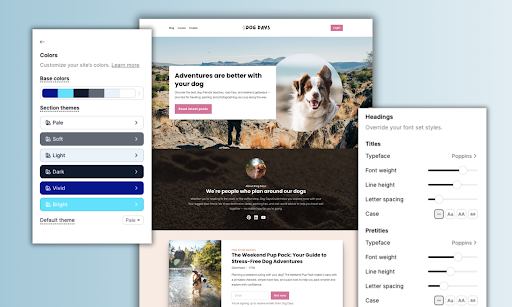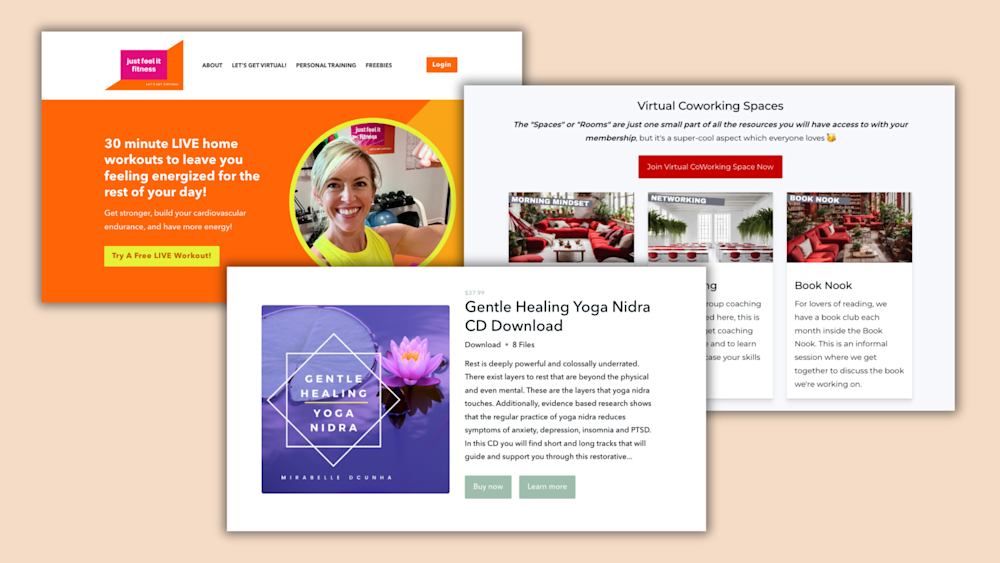As a creator, you know firsthand that growing your audience is hard work. Nearly one-third of creators say it’s the biggest challenge they face building their businesses.
You put so much time, effort, and sometimes even money into building relationships with your audience on social media platforms. You create valuable content, hone in on your niche, and try to keep up with trends (hello, Instagram Reels).
Shouldn’t all that hard work pay off?
Having a following on a platform doesn’t mean you own your relationship with that audience. And if you don’t, you’re missing out on 1) people seeing all that you have to offer, and 2) the benefits — monetization, community building, and growth — of having that audience in the first place.
Here’s what “owning your audience” means and why it matters.
What does it mean to own your audience? (And why is it so important?)
Owning your audience means building relationships with people on your own terms. You know who they are and how they interact with your content, whether they’re discovering your work for the first time or have long been loyal fans.
You build those relationships by owning when and how you talk to your audience. You communicate with them through a platform or channel that you control, like your email list or website. That direct line of communication is scalable, so you can easily reach the right people at the right time, whether that’s an individual customer or your entire email list.
It’s the difference between posting on Instagram and hoping the algorithm puts your content in front of your followers vs. knowing that your message gets to the right people.
When you own your audience, you aren’t competing with thousands of other brands and creators vying for your followers’ attention. That means you can give your audience a great experience, whether through access to your valuable content, a niche private community, or an email newsletter they look forward to reading every week — like Khe Hy’s RadReads, which he grew from a 36-person email list into a $500K+ creator business.
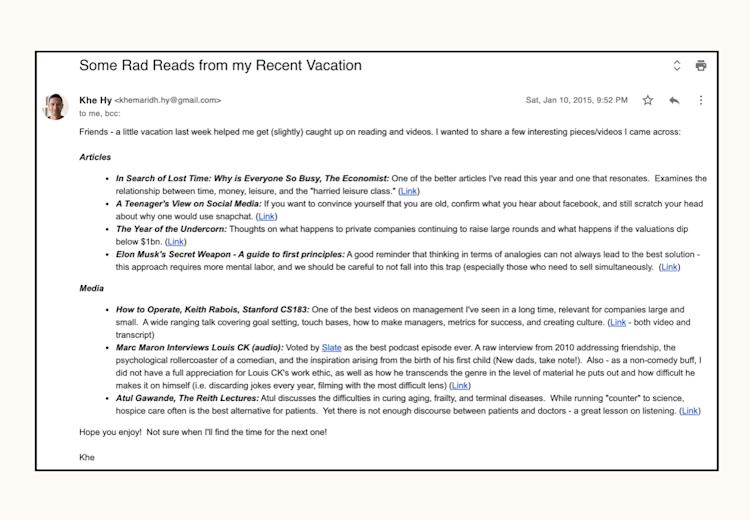
Owning your audience also means you can learn more about them and keep track of that information, especially as you start to sell products. You’re not relying on a secondary platform like social media to share bits and pieces of audience information with you. Instead, you can start to get to know them as individuals.
Imagine you’re hosting a dinner party for some new friends. To make sure they have a great time, you need to learn a few things about them beforehand: Do they have any dietary restrictions? What type of music do they like? Do they prefer wine, beer, or a mocktail?
Just like asking your friends for their preferences helps you cater a party to your guests, getting to know your audience as more than just “likes” or “follows” helps you create content and products that meet their needs.
The result? Growing your creator business with more sales and happier customers.
The consequences of not owning your audience
When you don’t own your audience, you miss out on opportunities to build relationships, monetize your audience, make sure your followers see your content, and grow your business.
Here are three ways that social media platforms make it harder to own your audience:
-
Platforms like Facebook, Instagram, and TikTok don’t let you take the audience you built with you. You can’t message all of your TikTok followers at once or export a list of their email addresses to communicate with them on your terms.
-
Social platforms’ algorithms are designed to keep users on social media apps for as long as possible, putting platform profits above creators’ success. Ever-changing algorithms mean your followers might not see your work right when you post it — if they ever see it at all. These platforms also promote other creators’ work to your followers and show your content under the platform’s branding, not your own.
-
They don’t let you choose how you monetize your audience. Revenue sharing and creator earnings are at the discretion of the platform. Facebook doesn’t let you charge for community access, and Patreon doesn’t allow free tiers. If you want free and paid memberships, you’re stuck doing twice the work on two community platforms.
We aren’t saying that creators should swear off social media altogether. It’s a powerful way to grow your following and help new people discover your content — but it shouldn’t be the only way you communicate with your audience. Using social media alongside other channels (like email) can make a major difference in successfully growing your creator business.
Intentional ways to build audience relationships on your own terms
A big part of owning your audience is having control over their experience at every stage, whether they’re a brand-new follower or a long-time customer.
There are many ways to make that happen. Here are two we recommend for creators:
-
Start growing your email list early on
-
Choose a creator-friendly all-in-one platform
1. Start growing your email list early on
Email is a tried-and-true marketing channel for a reason: It’s easy and affordable to get started — and building your email list early can pay off in spades.
If you don’t already have an email newsletter, we recommend starting one ASAP. A newsletter is a simple, low-cost way to build relationships with your audience.
Picture this: You’ve built a following on Instagram by sharing videos and photos of your delicious homemade baked goods. Your followers often ask you to share your recipes and baking secrets, so you create your first digital product: an online “bake-along” workshop where they can learn how to make your famous chocolate chip cookies.
You plan the content for the workshop, whip up some promotional graphics with Canva, and post them on Instagram to spread the word. But you don’t have a budget for paid social ads, so there’s no guarantee that your posts will show up on your followers’ feeds.
Your workshop’s success is at the mercy of the algorithm*.
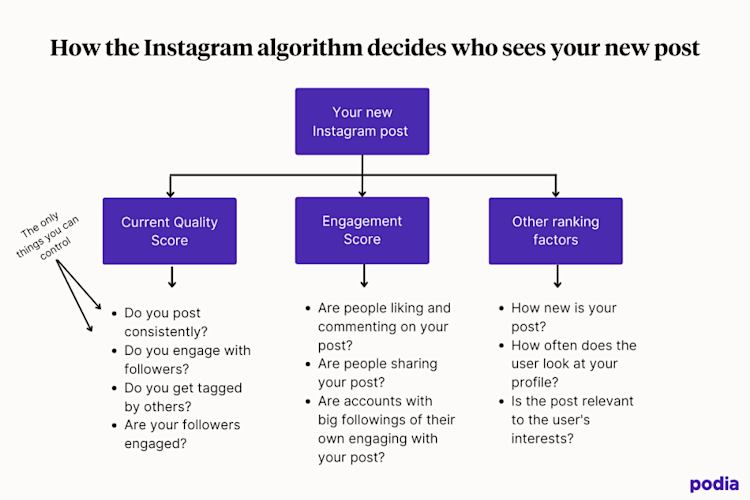
(*The Instagram algorithm changes frequently and without notice, so the info in this graphic is subject to change. That’s one of the biggest reasons creators are fed up with Instagram — and moving to channels they own, like email and private communities.)
Now, imagine that you’ve been working to grow your email list as your social profiles gain popularity. People have opted in to hear from you via email, and you send out a monthly newsletter.
When it comes time to launch your workshop, you post on social and email your list. The information lands right in their inboxes — no hoops to jump through or algorithms to worry about. The followers who asked about your recipes learn about the workshop and are excited to sign up. It’s a success — all because you invested in email early on.
Where you host those digital products — and run the rest of your business — can make a big difference, too.
2. Choose creator-friendly tools and platforms
Many platforms treat creators like they exist in a vacuum — only to produce content and engage followers on that platform — rather than as real people working to build brands and businesses. These companies don’t acknowledge what it means to start and grow a creator business.
In other words, they aren’t creator friendly.
“Creator-friendly means that a product appreciates and anticipates the needs of a creator,” explains RadReads founder Khe Hy, who grew a 36-person email list into a $500K+ creator business.
A creator-friendly platform makes owning your audience relationships and controlling their experience a whole lot easier.
If you use more than one platform, you need to be able to easily import and export audience info — and your tools need to talk to each other through Zapier or direct integrations. Spencer Fry, Podia founder and CEO, describes the importance of these features:
“Creators work to build their own audience — and long-lasting relationships — and that shouldn’t be a reason to get locked into a certain platform. You should be able to take the fruits of your time and labor along with you wherever you go."
"That means the ability to take your data, customers, and earnings with you to a different platform, or at the very least, export off an existing platform, in an easy, quick way.”
Creator-friendly platforms also make it easier to reach everyone — customers, students, free community members, paid subscribers, your email list — at the scale you want. You can send a note to everyone on your list or reach a specific student in a course cohort from the same dashboard.
Platforms like Facebook aren’t sending info to your email provider. (They don’t even let you export email addresses.) That means you can’t use audience info to segment your list, and you have to do more work on multiple platforms to communicate with everyone.
One creator described their struggles with Facebook’s limited community features this way:
“I have to pay a full-time virtual assistant to admit members, welcome them, moderate, etc. We have Google Sheets and separate Facebook Messenger software that costs $30/month, plus Facebook’s algorithm and distractions. It’s such a mess.”
This becomes especially important if you want to do more than offer free content. To start monetizing your business through digital products and communities, you need the right tools.
For example, Jill and Jeffrey from the Whole Food Plant Based Cooking Show wanted to make the most of their popular YouTube channel. They decided to build an online community membership with two goals:
-
Monetize their audience through paid memberships
-
Create a space to share updates with their supporters
“We tried Patreon, but they wouldn’t allow free members. And we wanted everyone in one place,” they explained.
They switched from Patreon to Podia, which makes it possible to offer both free and paid membership plans. Now, Jill and Jeffrey offer a free membership tier for followers who can’t pay the monthly subscription fee but want regular show updates.
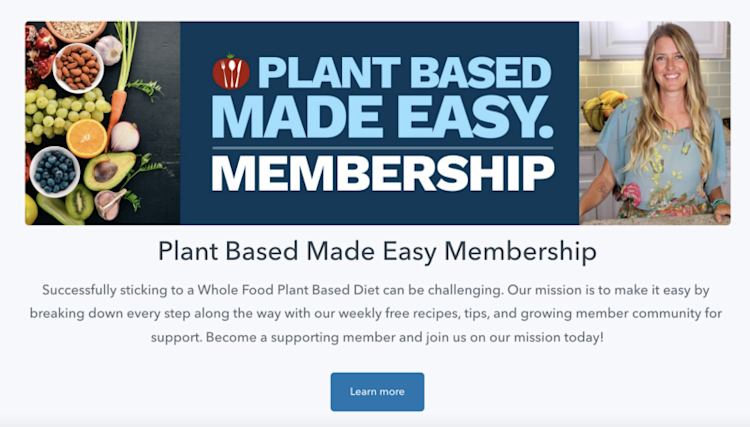
Bottom line: The tools you use should see and support you holistically as someone creating something amazing — not just as a way for them to make more money. Creator-friendly platforms know how important it is for creators to own the relationships and communication with their audiences. And when you’re empowered to own those things, you have the opportunity to build an incredible creator business on your terms.
Ready to get started with a creator platform that puts your success first? Sign up for a free 30-day trial of Podia today. We can’t wait to watch you grow.

